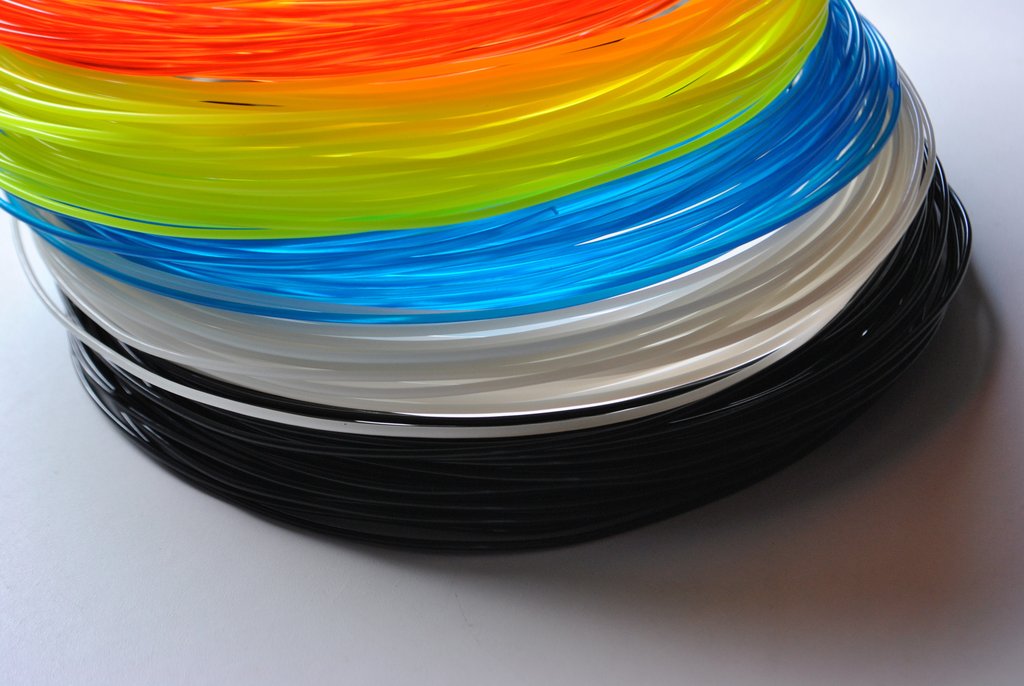
New materials vendor ThreeD Materials has a new subscription-based method for distributing 3D printer filament, but is it something you should do?
There seems to be three kinds of people that use desktop 3D printers:
- Those that are very busy, using their 3D printer almost every day, consuming plenty of filament
- Those that use their machine occasionally in bursts when projects require their use
- Those that have a dead 3D printer that hasn’t been used since the initial filament spool was exhausted, or a jam occurred
Ignoring that last case (and you’d be surprised how many of those there are), the first two scenarios pose a dilemma: how should you buy 3D printer filament? One at time? In large batches?
For those doing occasional projects, it’s pretty clear that you should simply order what you need when you need it: it’s a predictable situation. The bigger question faces those with continuous needs.
It’s certainly less expensive to buy filament in batches, as you can occasionally gain volume discounts. You’ll also save on shipping costs as it’s more economical to ship large amounts at once.
However, there’s problems when ordering large quantities at once:
- Do you really know the amount you will be using? What if you overestimate?
- Are you CERTAIN you have the correct filament type you will be using in coming months? Do you really know whether you’ll ever need ABS? Or will all your prints be PLA? Or something else?
- And colors – what color(s) would you require? Monotone because it doesn’t matter? What if a client requires something in a specific color?
- Are you able to properly store the materials before they’re used? Or will they (especially the PLA) go stale before they hit your hot end? There’s few things worse than constantly cracking PLA.
While ordering filament as you need it is certainly more flexible, it can be more expensive to do so, at least from the shipping cost and volume discount aspects.
ThreeD Materials offers a subscription service for filament that seems to be a bit of a compromise between those two extreme positions, called “FilaBox”.
Note: ThreeD Materials says they are the “World’s First Filament Subscription Service”, but in fact they are not. I wrote of one more than a year ago, called ProtoCrate, which appears to be still operating.
For USD$54 per month, they’ll deliver you – automatically – two spools of filament. You can select PLA, ABS, Nylon, PLA+Nylon, ABS+Nylon, PLA+Flexible in either 1.75 or 3.00mm formats. You don’t need to order; it just arrives each month.
There are some outstanding questions about this service, however. What color of filament is provided? Does it change from month to month? Random? It does not appear you can choose a color at checkout, although the company does seem to offer several colors if ordering directly.
What about the quality of the filament? With all the poor-quality, low-cost filament on the market, it’s vitally important to ensure properly produced filament is the only substance hitting your extruder. ThreeD Materials doesn’t state any specifics about the quality of their PLA and ABS filaments. Their Nylon filament, however, is from Taulman, one of the well-known quality producers, so there’s that.
Another question surrounds your use of exotic materials beyond PLA and ABS. Would you ever find yourself needing, say, Wood-filled plastic? Metal? Carbon Fiber? If so, you will have to order them separately from your ThreeD Materials subscription, and the machine time used to print the exotics would take away from your use of the subscription filaments, possibly leading to a surplus of material on your shelf.
However, assuming you’re OK with colors and quality, there is one issue remaining: does two spools per month meet your typical throughput? For some it would, but I suspect many operators would be either above or below that mark.
For those with usage exceeding two spools per month, you can simply order more on an ad-hoc basis.
For those with usage under two spools per month, you’d rapidly find yourself accumulating unused spools, which is not good if they’re PLA as they could eventually expire.
I think that you should carefully consider your long-term usage patterns and see if ThreeD Materials’ subscription option would fit your needs. If so, it may be worth a test, at least for a few months.
Via ThreeD Materials

